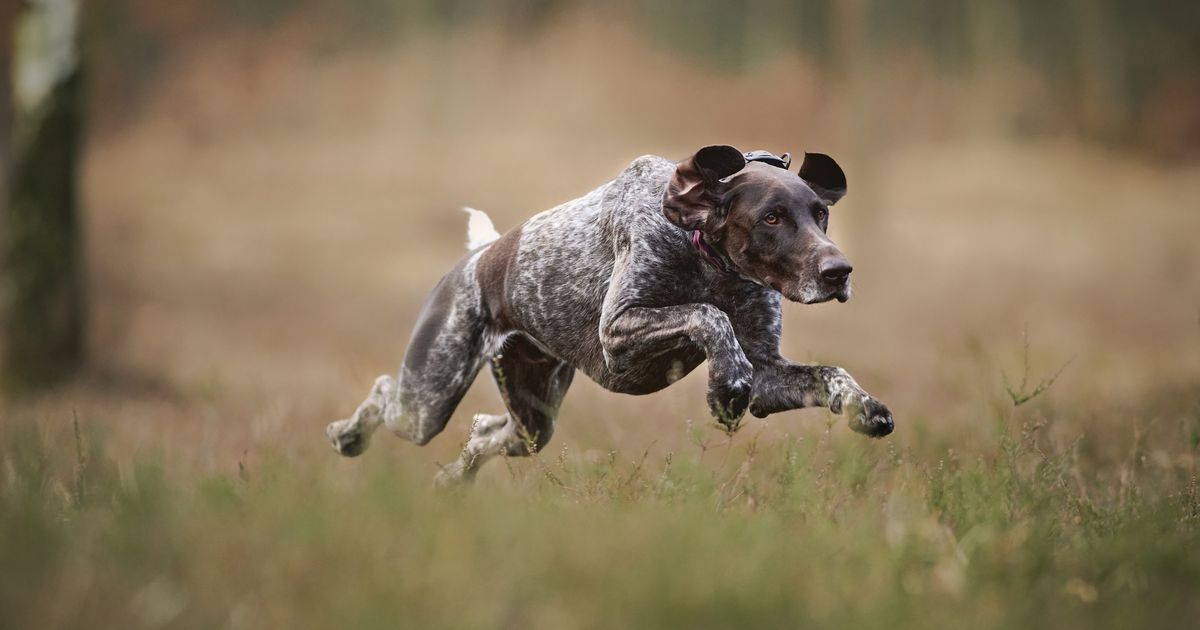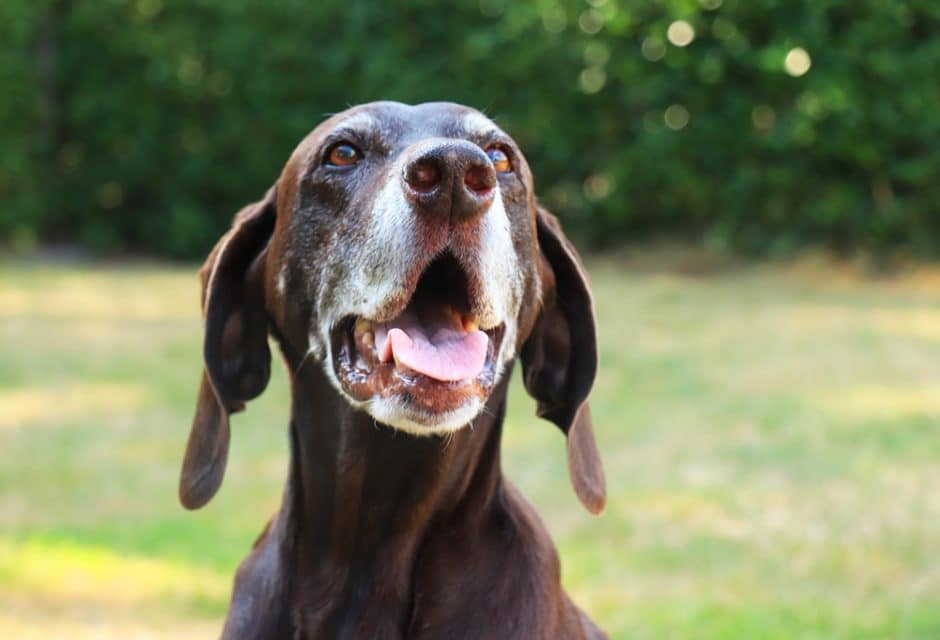Owning a German shorthaired pointer can be fun, but it comes with challenges. Knowing these challenges is important for future owners. This breed has a lot of energy and strong hunting skills, which can lead to behavior problems. Many owners report issues like counter-surfing and digging, especially when their dogs don’t get enough exercise. To help manage their energy, some owners look for dog running machines for sale to keep their pets active indoors. If you’re considering adopting this breed, think about your lifestyle and make sure you have the time and resources to properly care for them.
Key Takeaways
-
German shorthaired pointers need about two hours of exercise each day. This helps them stay happy and prevents bad habits like chewing and digging.
-
Training a GSP takes patience and consistency. You should use positive rewards to handle their stubbornness and energy.
-
Socializing them early helps control their hunting instincts. It also makes GSPs better with other pets and people.
-
Giving them mental challenges and clear rules can reduce bad behavior. This keeps your dog calm.
-
A treadmill can help meet their exercise needs indoors. This is useful during bad weather or busy days.
High Energy Levels

German shorthaired pointers have a lot of energy. They need a lot of exercise to stay healthy and happy. If you want to adopt a GSP, you should know about their exercise needs. Not meeting these needs can cause problems.
Exercise Needs
GSPs usually need about two hours of hard exercise each day. This is more than many other sporting breeds. Here’s how different breeds compare in daily exercise needs:
|
Breed |
Daily Exercise Requirement |
Exercise Types / Notes |
|---|---|---|
|
German Shorthaired Pointer |
About 2 hours |
Needs different, hard exercise like brisk walks, hikes, agility classes, flyball, field training. |
|
Labrador Retriever |
1 to 1.5 hours |
Needs hard activities like swimming, hiking, agility, running, fetch. |
|
Nova Scotia Duck Tolling Retriever |
At least 1 hour |
Needs hard exercise like field training, hunting, flyball, hide-and-seek. |
|
Golden Retriever |
More than 1 hour |
Needs hard exercise and mental challenges like puzzle toys, obedience training, agility. |
|
Brittany Spaniel |
At least 1 hour, preferably 2 |
Needs high-impact exercise like field training, hunting, agility, running, hiking, scentwork. |
If you don’t meet these exercise needs, your GSP might have problems. They could show bad behaviors like:
-
Barking too much
-
Digging
-
Chewing furniture or shoes
-
Climbing fences or getting into trash cans
These behaviors often happen because they are bored or anxious. GSPs need mental challenges and physical activity. Without it, they can get frustrated and may develop obsessive behaviors.
Boredom and Behavioral Issues
When GSPs don’t get enough exercise, they look for their own fun. This can cause restlessness and bad actions. Common problems include:
-
Chewing on household items
-
Jumping on people too much
-
Hard to train because of high energy and prey drive
You need to give your GSP structured activities to use their energy well. Doing things like agility training or fieldwork can help stop bad behaviors. Remember, a well-exercised GSP is a happy GSP!
Training Challenges

Training a German shorthaired pointer (GSP) can be fun but hard. They are smart and want to please you, which helps with training. However, their high energy can make it tough to teach them to obey and socialize. Knowing these challenges can help you train them better.
Obedience Training
Obedience training is very important for GSPs. You need to set a regular routine early. This means having set times for meals, walks, and training. Here are some common problems you might see:
-
Stubbornness: GSPs can be strong-willed. Use positive rewards like treats, praise, and play to encourage good behavior.
-
High Energy Levels: Their active nature needs lots of exercise and mental fun. Without it, they may have trouble controlling themselves.
-
Separation Anxiety: GSPs can get anxious if left alone too long. Slowly get them used to you leaving to help with this.
-
Leash Reactivity: Some GSPs may react strongly to other dogs or things while on a leash. Use positive rewards and get help if needed.
-
Impulse Control Issues: You need to train consistently and be patient to help them behave better.
|
Common Obedience Training Challenges |
Recommended Solutions |
|---|---|
|
Stubbornness |
Use positive rewards, stay consistent, and motivate with treats. |
|
High Energy Levels |
Give plenty of exercise and mental fun to use energy well. |
|
Separation Anxiety |
Gradually get them used to you leaving and create a calm space with toys. |
|
Leash Reactivity |
Use positive rewards and get help if needed. |
|
Impulse Control Issues |
Consistent training and patience are key to improving behavior. |
GSPs do well with structured training. They learn commands quickly, but you must be consistent. Avoid using negative methods to keep training positive.
Socialization Requirements
Socialization is very important for GSPs, especially if you have other pets. Their strong hunting instincts can cause issues. Here are some key points to think about:
-
Early Socialization: Start socializing your GSP when they are 8 to 14 weeks old. Gradually introduce them to different people, places, and animals.
-
Managing Prey Drive: GSPs may have trouble with smaller pets. Early and ongoing socialization helps control these instincts and teaches them to behave.
-
Supervision: Always watch them when they are with other pets, especially small ones. This keeps everyone safe and helps your GSP learn good behavior.
-
Separation Anxiety: GSPs can get anxious if left alone for too long. Gradually get them used to short separations to avoid this.
To socialize your GSP well, follow these tips:
-
Introduce your puppy to different people and places.
-
Set up playdates with friendly, vaccinated dogs.
-
Start leash training early to control them during social times.
-
Use positive rewards to encourage good social behavior.
-
Watch your puppy's body language to prevent stress.
By focusing on obedience training and socialization, you can help your GSP be a happy and well-behaved part of your family. Remember, a well-trained dog is a joy to have!
Destructive Behavior

German shorthaired pointers (GSPs) can show destructive behavior if you don’t meet their needs. It is important to understand why this happens so you can manage it well.
Causes of Destruction
Many things can cause destructive behavior in GSPs:
-
Medical Issues: Problems like hypothyroidism can cause sudden aggression.
-
Behavioral Problems: Resource guarding often comes from fear or insecurity.
-
Pack Hierarchy: Letting your dog on furniture may make them feel more dominant and aggressive.
-
Anxiety and Reactivity: High energy can lead to snapping, biting, and barking.
-
Redirected Frustration: Destruction can happen when dogs feel anxious or confined when left alone.
Veterinary behaviorists suggest checking your dog’s health and using regular routines to manage these behaviors well.
Solutions to Mitigate Issues
You can do several things to help reduce destructive behavior in your GSP:
-
Daily Exercise: Give at least 1-2 hours of hard physical activity. Running, swimming, and agility training help use their energy.
-
Mental Stimulation: Keep your dog busy with puzzle toys, scent games, and training. This stops boredom and keeps their minds active.
-
Obedience Training: Start early and use positive rewards. Keep training sessions short and fun to keep them interested.
-
Socialization: Introduce your GSP to different people, dogs, and places. This helps lower anxiety and aggression.
-
Clear Boundaries: Set rules at home and use crate training to manage behavior. A safe space helps stop escape attempts from boredom.
By meeting both physical and mental needs, you can help your GSP do well and reduce destructive behaviors. Remember, a well-exercised and mentally engaged dog is a happy dog!
Benefits Treadmills for Dogs for Sale

Treadmills can be a good choice for German shorthaired pointers (GSPs) that need more exercise. These dogs have a lot of energy, and sometimes playing outside isn’t enough. A treadmill can help you give them the exercise they need, especially when the weather is bad or when you are busy.
-
simplicity and durability:One of the key advantages of non-electric dog treadmills is their simplicity and durability. Unlike electric treadmills, which have complex motors and electronic components that can break down, non-electric treadmills are powered by the dog’s own movement. This means there are fewer parts that can malfunction, making them more reliable and less likely to require repairs. For owners of GSPs, who need a piece of equipment that can withstand the dog’s high energy and strength, a non-electric treadmill is a sturdy choice. GSPs are powerful dogs, and they can put a lot of force on a treadmill when running. Non-electric models are often built with heavy-duty materials, such as steel frames, that can handle the wear and tear of regular use by a large, active dog like a GSP.
-
portability and space-saving design:Another advantage is their portability and space-saving design. Non-electric treadmills are typically lighter and more compact than electric ones. This makes them easier to move around, so you can set them up in different areas of your home depending on your needs. They also take up less space when not in use, which is a big plus for owners who live in apartments or have limited living space. GSPs need a lot of exercise, but if you don’t have a yard or live in an area with inclement weather, a non-electric treadmill can provide a convenient way for your dog to get the exercise it needs without having to go outside. You can easily store the treadmill in a closet or corner when it’s not being used, saving valuable space in your home.
-
more affordable than electric models:Cost is another factor where non-electric treadmills shine. They are generally more affordable than electric models. This is a great advantage for owners who want to provide their GSP with a way to exercise but don’t want to spend a lot of money on expensive equipment. With the money saved, you can invest in other items that your dog needs, such as toys for mental stimulation or high-quality food. The lower cost also makes non-electric treadmills a more accessible option for more dog owners, ensuring that more GSPs can benefit from the exercise they provide.
-
active engagement between the owner and the dog:Non-electric treadmills also promote active engagement between the owner and the dog. When using a non-electric treadmill, the owner is more involved in the workout process. You have to guide the dog, encourage it to keep moving, and monitor its progress. This interaction strengthens the bond between you and your GSP, which is important for their overall well-being. GSPs thrive on human interaction, and the time spent together on the treadmill can be a great way to build trust and communication. It also allows you to keep a close eye on your dog’s form and make sure it’s running safely, which is crucial for preventing injuries.

In conclusion, while German Shorthaired Pointers have their share of challenges, such as high energy levels, strong prey drive, need for mental stimulation, and potential separation anxiety, non-electric dog treadmills, available among the treadmills for dogs for sale, offer a practical solution. Their simplicity, durability, portability, affordability, and safety make them an ideal choice for GSP owners looking to provide their dogs with the exercise they need. By incorporating a non-electric treadmill into your GSP’s routine, you can help address their negative traits and ensure they lead a happy, healthy, and well-behaved life.










0 Comments